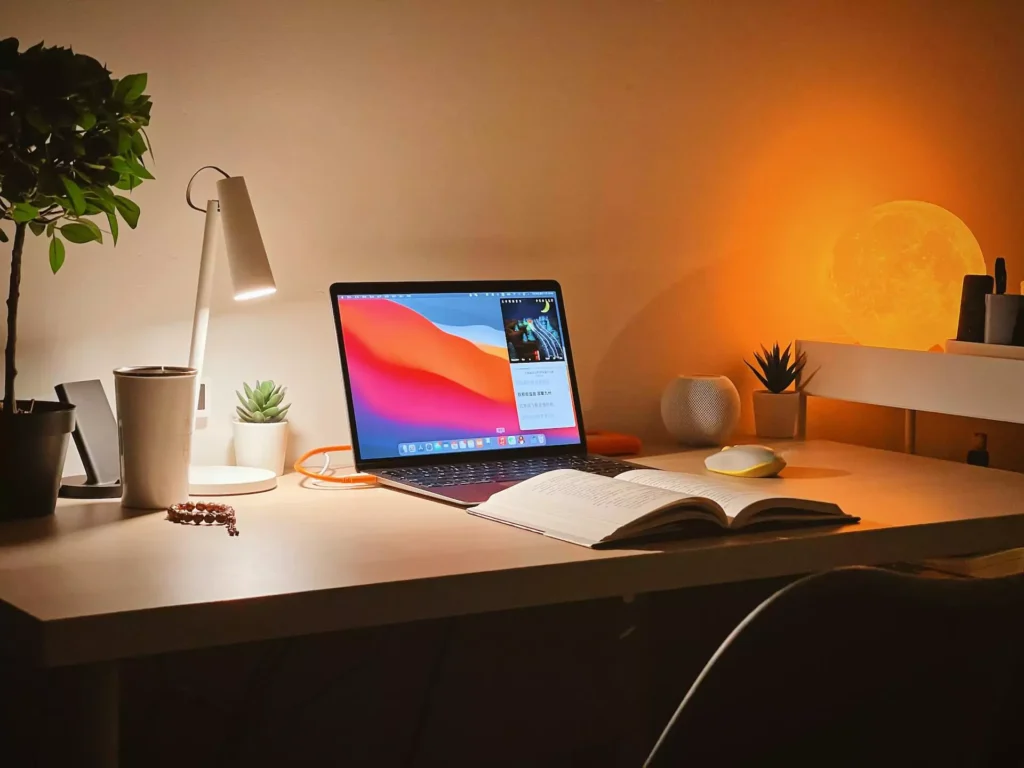How is your new academic year? Are you excited about going to school daily? Returning to in-person school can be exciting, such as reconnecting with friends, joining extracurricular activities, and sharing meals in the cafeteria. However, adjusting to the daily routine and full class schedule may also feel overwhelming.
Shifting from remote to on-campus learning presents its challenges. It is common to feel stressed during this adjustment period. You can avoid hours of anxiety over not having enough time for the things you enjoy by making a small effort to organize your time better.
Let out a deep breath if your current timetable makes you want more daily hours. All you need is a well-thought-out timetable. By setting up precise times for each task, you’ll notice that you start completing more chores as you adhere to a timeline. Continue reading to create a timetable.
Table of Contents
Why a Time Table is Necessary
Creating a structured timetable provides excellent time management. With allocated blocks for each task and commitment, you can plan your day and feel prepared to accomplish what needs to be done.
Focusing only on one task for a specified period may reduce distractions and boost productivity. Be careful to allot appropriate time for your hobbies and studies while creating your time table. You could better balance your time table by including activities that improve your physical and mental health. Your confidence will grow as you progressively begin to master your daily duties. When you head to bed, you’ll be more motivated, at ease, and less anxious.
The following are a time table’s main advantages:
- Establishes a daily time table
- Enhances time management abilities
- Aids in maintaining objective focus
- Inhibits the procrastination
- Lessens stress and tension
Creating a timetable to fit your needs and lifestyle is one way to achieve better organization. At a minimum, having a system is beneficial. Prioritizing your tasks makes completing them easier. However, any time table won’t do. It requires meticulous preparation, crafting, and adaptation.
Studying at home differs from our typical academic time table at school or college. It requires more concentration and work.
A well-structured study time table at home might help you avoid wasting valuable time by establishing a productive routine. To learn “How to make a timetable for study at home,” continue reading.
How Can I Create the Ideal Student Timetable?
These are the top 12 suggestions to help you create the ideal study time table for pupils at home.
1. Examine Your Studying Habits

Self-assessment is important before creating a study timetable. Observe when, how long and in what conditions you work most effectively to optimize your timetable.
Pose questions to yourself like: when is the best time to take a break from studying – late at night or early morning?
Your responses will determine how you will arrange your breaks, choose which subjects to study first, how much time to spend on each subject, and other things.
If, for instance, you find yourself tired after lunch, time table a power nap period. If you can study better at five in the morning, use that time on a challenging subject. Create the ideal time table for your everyday activities.
2. Recognize how much time you have each day.

Students have a lot of responsibilities during the day outside their education. Your time table will be influenced by any classes or talks you have.
Determine how many hours you have available, and this should happen after subtracting time for exercise, lunch, dinner, school or college hours, and other significant activities.
Setting aside time is the next stage. Only a few courses, like mathematics, require constant practice.
This will help appropriately divide hours across subjects for maximum learning within your scheduled time. Consider the course’s practice, revision, interest, and difficulty level requirements.
3. Have a practical perspective.

There’s the thrill of doing anything and everything when we’re motivated. Goodness only comes into play when this is truly feasible.
Make sure your goals are reasonable. Plan your study sessions with the long term in mind. In light of this, establish an attainable goal and divide it into several smaller objectives.
You have two months to finish 25% of your social science course load. Try to accomplish it now by finishing one chapter at a time rather than seven in one sitting.
This is merely an illustration. Set these objectives based on your learning capacity and pace. After all, something you may consider realistic may not be feasible for someone else.
4. A Break Is Needed

Your brain can be refreshed during breaks. Long study sessions consistently lower your productivity.
Every few hours, you should treat yourself to something. It might be a walk, a chocolate bar, an engaging film, a few minutes on social media, a chat with a buddy, or anything else.
One of the finest strategies for improving focus is to take breaks. Remember to include them in your study time table when you make it. Make sure you take both extended and brief rests.
Sometimes, you wake up for only fifteen minutes but waste the whole day. Recharge your mind, but keep it active. Always return promptly to your desk.
5. Set Aside Time To Rest

You must allow enough time for eating and sleeping.
Remember there are only 24 hours, so schedule sufficient sleep of 7-8 hours per night. Refrain from sacrificing your sleep or meal schedule unless required. You should arrange your day so that the laborious chores are finished early, and you may wind down with something soothing to ensure a good night’s sleep.
Do something joyful before turning in for the night. It could be as simple as reading your favourite book, sketching, or keeping a gratitude diary. You are more likely to wake up feeling peaceful when you go to bed feeling that way.
Remind yourself frequently that it is typical for habits to take time to build as you adjust to your new time table. Always be easy on yourself if you stick to the program exactly. You can become the achiever you have always wanted to be with a bit of perseverance and discipline.
6. Exam Period

Allow yourself around fifteen to twenty minutes at the end of the day to consider the lessons you’ve learnt. This review period is essential because it helps you identify your mistakes during your studies, provides a summary, and outlines how you may have learned the material more effectively.
Check this also: 7 Best Tips for Exam Tests Plan the Day of a Test
7. The Variation Pleases Your Brain

I made the error of spending the entire day studying just one subject. Although this seems gratifying, you don’t benefit from it. You are looking at the “blocking method” when you focus on one subject completely before going on to the next.
Even though you have mastered it, you’ll probably forget it quickly. Conversely, the “interleaving method” is an option. It includes bouncing around from one issue to another. Although it may be difficult for you to switch topics in between, doing so will help you in the long run.
Once a topic has been partially studied, switch it up, and this compels you to rewrite it the next time and helps your brain develop connections between the themes.
8. Create an Eye-Catching Table

The beauty of our planet lies in its creativity. Using creativity is the answer to How can I concentrate when studying at home. Take out your sketch pens, papers, and colours and decorate your table.
Creating and following a timetable is a task and a tool to help you stay on track. With a scheduled plan, you can ensure all of your hard work and efforts are committed as intended without being wasted.
A visually pleasing layout that catches your attention makes a timetable more effective. If the format appealingly draws the eye, you will be more inclined to reference it frequently. Well-organized and easy-to-read tables tend to hold viewers’ focus, leading to multiple glances throughout the day/week,and this repeated viewing solidifies adherence as you are regularly reminded of upcoming tasks and commitments.
It will remind you of your daily time table each time you glance at it. You must study after the eighth, tenth, or fifteenth time.
9. Double the Time You Estimated

We frequently need to pay more attention to how much time a topic will require. One method is to double the time you estimate a task will take, which results from our tendency to underestimate the necessary times. If you find that double is too much, give yourself more time.
Because your time table is all about timing, this is important. Should you significantly misjudge your estimations, you must discard the time table. You can overestimate your times by as much as 40–50%.
10. Put Your Distractions Away

You will very certainly run into distractions when you are at home. There could be unrest, television, cooking aromas, or your siblings’ commotion. You must leave all of this behind. Study quietly and devote all of your concentration to your study.
Create your table using a time block. Here, you will spend a significant amount of time studying continuously. 45 minutes, an hour, or even four hours can make up the block. Everything is up to you, enabling you to remain busy and resist giving in to outside distractions.
11. You Can Be Late by Up to Five Minutes

Adaptable? I wish I had heard about this sooner. You must remember that a timetable merely lists what you should do each day. It is optional for you to follow it minute by minute.
So, playing around for five to ten minutes is acceptable. You’ll be wasting a lot of time if you say, “I’ll do it in the next hour.” Sit down at your desk and begin studying with the remaining time.
12. Make the necessary adjustments for your time table

You own the table and can modify it. Make sure the timetable you’ve selected is fulfilling your needs every week. You must get rid of anything that is impeding you from completing your goal. Review and modify your plan until it fully supports your needs and rhythms.
Just because you have difficulty sticking does not necessarily mean you must change it. The sole justification for changing the timings should be effectiveness. Make it work for you, not for your laziness.
In summary
These are the methods and advice. How can I create and follow a study time table? You have unique circumstances to cope with; no one can give you an exclusive list of how to do it.
This is merely a roadmap to help you along the path. How can I create a study time table?Ultimately, though, it is your responsibility to put in the effort. Roll up your sleeves and custom-build a routine that works uniquely for you. Tailor it through self-reflection and adjustment over time.
